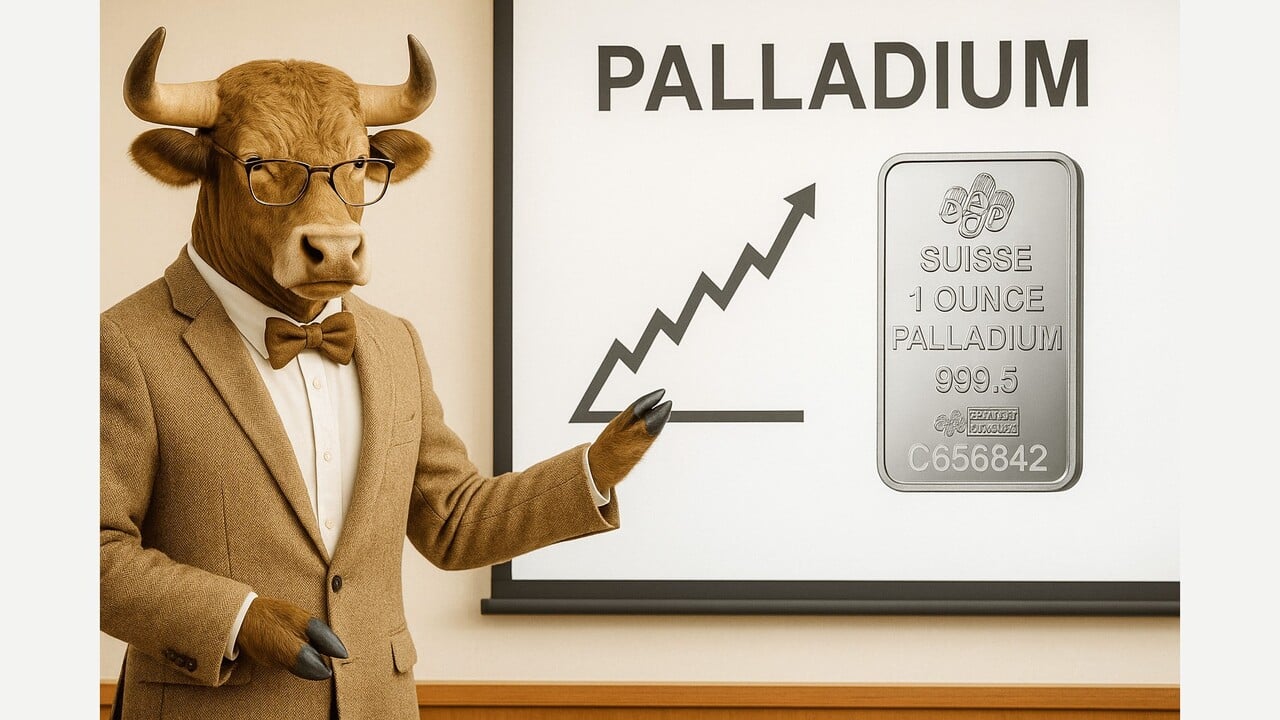As the precious metals market continues to gain momentum, gold and silver have rightfully captured the spotlight. However, there’s another underappreciated metal that deserves attention: palladium. Like platinum, palladium is undervalued and well-positioned to launch into its own bull market, following the broader trends in precious metals.
Understanding Palladium
Palladium is a lustrous silvery-white metal discovered in 1802 by English chemist William Hyde Wollaston. It closely resembles platinum but is the least dense and has the lowest melting point among the platinum group metals (PGMs). Notably, palladium does not tarnish in air, making it an attractive option for various applications.
Rarity and Supply
Palladium is incredibly rare—about 15 times rarer than platinum. To visualize this, if all the gold ever mined could fit into 3¼ Olympic-sized swimming pools, all the platinum would fit inside a typical house, and all the palladium ever mined would comfortably occupy a single living room. This rarity is significant, as it means that supply is heavily concentrated, with Russia and South Africa accounting for 78% of global palladium production.
Industrial Applications
Palladium is prized for its unique physical and chemical properties, making it essential in various industries. Approximately 82% of palladium demand comes from the automotive sector, primarily for catalytic converters, while the remaining demand is split among chemical manufacturing, electronics, and jewelry.
Economic Sensitivity
Unlike gold and silver, which have long histories as monetary metals, palladium has seen minimal use as money. Its demand is highly sensitive to economic cycles, making it more volatile than its counterparts. This cyclical sensitivity has led to a cautious outlook for palladium, especially in light of potential economic downturns.
Market Dynamics and Deficits
The palladium market has been in a structural deficit since 2010, with demand consistently outpacing supply. This deficit has averaged about 500,000 ounces annually, driven by tightening global emissions standards and stagnant mine production. As a result, above-ground inventories have been depleted, leaving the market vulnerable to price spikes.
Geopolitical Risks
The heavy reliance on a few countries for palladium supply adds another layer of uncertainty. Geopolitical instability and labor strikes in Russia and South Africa can significantly impact prices, making the market susceptible to sharp fluctuations.
Technical Analysis
Recent technical analysis reveals promising signs for palladium. After a steep decline since 2021, palladium has formed a rounding bottom pattern over the past two years, often indicative of a bullish reversal. Since the beginning of 2024, palladium has surged approximately 40%, aligning with the broader precious metals bull market.
Key Resistance Levels
A critical resistance zone exists between $1,200 and $1,400. A decisive close above this range could confirm the onset of a new bull market for palladium, setting the stage for further price appreciation.
Valuation Metrics
Assessing palladium’s potential requires examining various valuation metrics. The inflation-adjusted price of palladium currently hovers around $1,300 per ounce, significantly lower than its historical peaks. Additionally, the palladium-to-U.S. M2 money supply ratio is near its lowest level in a decade, suggesting that palladium is undervalued relative to monetary inflation.
Relative Valuation
Comparing palladium to gold and platinum reveals that it is trading at historically low levels. This relative undervaluation indicates significant upside potential as market conditions improve.
The Dollar’s Influence
The U.S. dollar’s strength has kept commodity prices, including palladium, lower than expected. However, a potential bear market for the dollar could trigger a bullish surge across the commodities sector. With the U.S. Dollar Index recently breaking below key support levels, the likelihood of continued weakness increases, setting the stage for a commodities boom.
Investment Opportunities
Investors looking to gain exposure to palladium have several options. Physical bullion, such as bars and coins, remains a popular choice. Additionally, exchange-traded funds (ETFs), futures, and mining stocks offer alternative avenues for investment.
Diversification Strategy
For those with a solid foundation in gold and silver, allocating a small portion (around 5% or less) to palladium can enhance portfolio diversification. This strategy allows investors to capitalize on palladium’s potential while maintaining stability through gold and silver holdings.
Conclusion
Palladium presents a compelling investment opportunity for those willing to look beyond the more popular precious metals. Its rarity, industrial demand, and potential for price appreciation make it a valuable addition to a diversified portfolio. As we navigate the evolving landscape of precious metals, palladium stands out as a gem waiting to shine in the upcoming bull market.
For more insights and updates on precious metals, consider subscribing to The Bubble Bubble Report for in-depth analysis and expert commentary.




